Enterprise SEO

Enterprise SEO
Enterprise SEO (Search Engine Optimization) is a specialized approach to SEO that is tailored to the unique needs and challenges of large-scale, complex websites associated with big enterprises. Unlike smaller websites, enterprise-level websites often have a vast number of pages, multiple subdomains, diverse content types, and complex site structures. Here’s an overview of Enterprise SEO:
Challenges in Enterprise SEO:
1. Scale:
- Managing a large number of pages and content assets while ensuring each is optimized for search engines is a significant challenge.
2. Site Structure Complexity:
- Enterprise websites often have intricate structures with various sections, subdomains, and international components. Ensuring a coherent SEO strategy across this complexity is crucial.
3. Coordination Across Teams:
- Large enterprises typically involve multiple teams responsible for different aspects of the website (content, IT, marketing). Aligning these teams for a unified SEO strategy is a critical challenge.
4. Content Governance:
- Ensuring consistency in quality, relevance, and optimization of content across a multitude of pages and contributors requires robust content governance.
5. Internationalization:
- Enterprises with a global presence need to address challenges related to multiple languages, geotargeting, and international SEO considerations.
6. Mobile Optimization:
- Given the increasing prevalence of mobile users, optimizing for mobile search is crucial. This includes ensuring responsive design and mobile-friendly content.
Key Strategies in Enterprise SEO:
1. Comprehensive Site Audits:
- Conducting regular, in-depth audits to identify technical issues, content gaps, and areas for improvement across the entire website.
2. Keyword Strategy and Mapping:
- Developing a strategic approach to keywords and mapping them to specific pages based on relevance and user intent.
3. Content Strategy:
- Establishing a cohesive content strategy that aligns with business goals, user intent, and SEO best practices. This includes managing duplicate content and optimizing large volumes of content.
4. Technical SEO:
- Addressing technical aspects such as site speed, crawl budget optimization, structured data implementation, and mobile-friendliness.
5. Link Building and Internal Linking:
- Implementing a robust link-building strategy to enhance authority and relevance. Additionally, optimizing internal linking to ensure a logical and efficient flow of link equity throughout the site.
6. Collaboration Across Teams:
- Facilitating collaboration between different departments and teams to ensure a holistic approach to SEO, involving IT, marketing, content creators, and web developers.
7. Mobile Optimization:
- Ensuring that the website is optimized for mobile users, including responsive design, mobile-friendly content, and a seamless mobile user experience.
8. Performance Measurement and Reporting:
- Implementing tools and processes for ongoing performance measurement, tracking key SEO metrics, and generating reports that provide actionable insights.
9. International SEO:
- Addressing the unique challenges of international SEO, including hreflang tags, geotargeting, and adapting content for different regions.
Benefits of Enterprise SEO:
- Improved Visibility: Effective enterprise SEO strategies enhance the visibility of the brand and its products or services across search engines.
- Increased Traffic: By optimizing for relevant keywords and improving overall search engine rankings, enterprise SEO contributes to increased organic traffic.
- Enhanced User Experience: SEO practices such as optimizing site speed, mobile-friendliness, and user-friendly site structures contribute to an improved user experience.
- Competitive Edge: Enterprises that invest in SEO gain a competitive edge by ensuring their online presence aligns with search engine algorithms and user expectations.
- Better Conversion Rates: Targeting the right keywords and optimizing the user journey can result in improved conversion rates.
